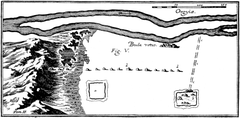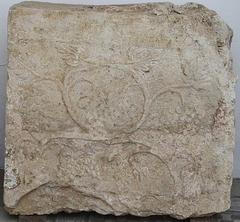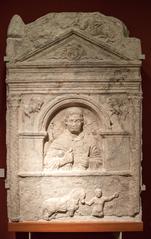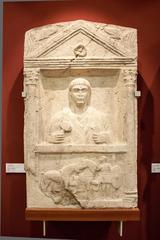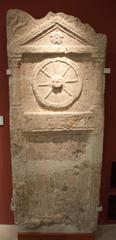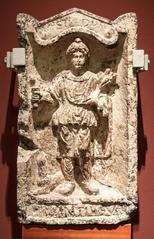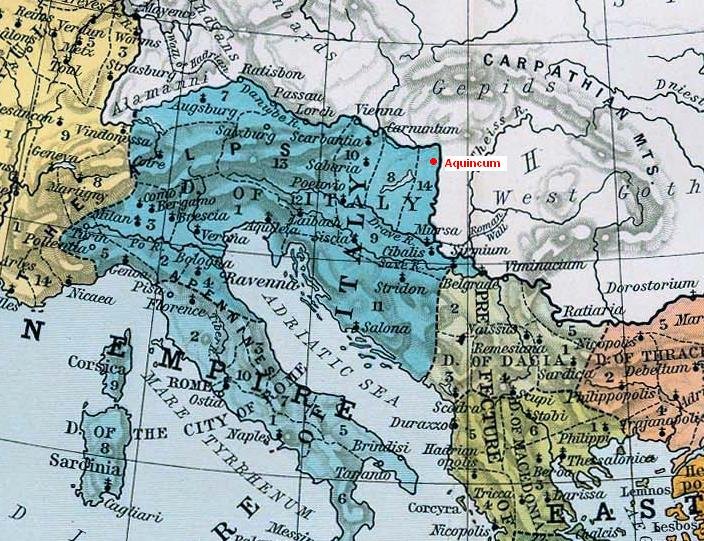
Aquincum Budapest: Visiting Hours, Tickets, and Historical Sites Guide
Date: 14/06/2025
Introduction: Exploring Roman Heritage in Budapest
Aquincum, located in Budapest’s Óbuda district, is one of Central Europe’s most significant Roman archaeological sites. Once the vibrant capital of the Roman province Pannonia Inferior, the site today features extensive ruins and an engaging museum that illuminate centuries of history, culture, and innovation. Aquincum offers a remarkable journey through time, from its Celtic roots to its flourishing Roman era, making it a must-see for history enthusiasts, families, and travelers interested in Budapest’s layered past.
This detailed guide covers everything you need to plan your visit: from a comprehensive historical overview to up-to-date practical information on Aquincum’s visiting hours, ticketing, accessibility, unique attractions, and travel tips. For further details and the latest updates, consult authoritative resources such as the official Aquincum Museum website, History Hit, Britannica, and Budapest by Locals.
Contents
- Introduction
- Historical Overview
- Early Settlement and Roman Conquest
- Roman Expansion and Urban Development
- Social, Religious, and Economic Life
- Decline, Rediscovery, and Modern Significance
- Visiting Aquincum: Essential Information
- Opening Hours and Tickets
- Getting There
- Accessibility and Facilities
- Unique Experiences and Events
- Visitor Tips and Frequently Asked Questions (FAQ)
- Conclusion and Recommendations
- Sources and Further Reading
Historical Overview
Early Settlement and Roman Conquest
Aquincum’s history begins with the Celtic Eravisci tribe, who settled in the area during the 1st century BC. The name “Aquincum” reflects the region’s abundant thermal springs, derived from the Latin word for water (Britannica). The settlement’s strategic position on the Danube River made it a natural hub for trade and communication.
Roman expansion reached Aquincum around AD 41–54, when a military base was established as part of the empire’s border defense system. The installation of Legio II Adiutrix, a legion of approximately 6,000 soldiers, catalyzed the growth of a dynamic civilian settlement alongside the fortress (Spotting History).
Roman Expansion and Urban Development
Aquincum’s importance soared in AD 106, when it was designated the capital of Pannonia Inferior. Urban development followed Roman models: the city boasted a grid street plan, monumental public buildings, a forum, amphitheatres, and advanced infrastructure including aqueducts and baths with hypocaust heating (History Hit, Britannica). At its zenith in the 2nd century, Aquincum’s population reached up to 40,000.
The city also held administrative prestige, receiving municipium status under Emperor Hadrian and later becoming a colonia under Septimius Severus, reflecting its autonomy and significance within the Roman Empire (Wikipedia).
Social, Religious, and Economic Life
Aquincum thrived as a multicultural center, blending Roman and local traditions. Its prosperity relied on trade along the Danube and local industries such as pottery, glassmaking, and metalwork (History Tools). The city’s social fabric included soldiers, artisans, merchants, and their families.
Religion was central to daily life. Temples dedicated to Roman gods, a well-preserved Mithraeum signifying the cult of Mithras, and later Christian influences all attest to Aquincum’s diversity (Salterton Arts Review). The amphitheatres hosted public spectacles, while the discovery of a Roman water organ highlights the city’s cultural sophistication.
Decline, Rediscovery, and Modern Significance
Invasions and internal decline from the late 3rd century led to Aquincum’s gradual abandonment. By the early 5th century, it had fallen to the Huns.
Rediscovered in the 18th century, systematic excavations began in the late 19th century, culminating in the opening of the Aquincum Museum in 1894. Today, about one-third of the ancient city is accessible, with ongoing research providing new insights (Salterton Arts Review, Budapest by Locals).
Visiting Aquincum: Essential Information
Opening Hours (2024–2025)
- April 1 – October 31: Tuesday–Sunday, 10:00–18:00 (Closed Mondays)
- November 1 – March 31: Tuesday–Sunday, 10:00–16:00 (Closed Mondays)
- Hercules Villa: Sundays only, 11:00–13:00, April–October
- Special Events: Extended hours during festivals such as the Night of Museums
Always check the official Aquincum website for seasonal changes and holiday closures.
Tickets and Admission
- Adults: 1900 HUF (approx. €5)
- Combined ticket (all Budapest History Museum locations, valid 1 month): 5500 HUF (approx. €14)
- Budapest Card holders: Free entry to exhibitions, 50% discount on the archaeological park
- Children under 6: Free
- Discounts: Available for students, seniors, groups
- Special Free Entry: Some national holidays, e.g., March 15th (BudAPPest)
Tickets can be purchased on-site or online for convenience and faster entry.
Getting There
- Address: Szentendrei út 135, 1031 Budapest, Hungary
- Suburban Railway (HÉV): Line H5 from Batthyány tér to Aquincum station (short walk)
- Bus: Lines 34, 134, 106 from Óbuda Szentlélek tér
- Parking: Limited on-site; public transport is recommended
- Budapest Card: Includes free public transport (Budapest.org)
Accessibility and Facilities
- Museum: Fully wheelchair accessible
- Archaeological Park: Mostly accessible, but some uneven terrain; sturdy shoes advised
- Strollers: Allowed, but may face difficulties outdoors
- Facilities: Restrooms, café, benches, shaded areas, gift shop, lockers, baby-changing stations
- Pet Policy: Leashed pets welcome outdoors and indoors (except in exhibition halls)
Site Layout
Aquincum features:
- Extensive outdoor ruins: forum, baths, marketplace, temples, amphitheatres (civil and military)
- Reconstructed Roman houses with period furnishings and interactive displays
- Museum: Artifacts, mosaics, statues, a working replica of the Roman water organ
- On-site interpretive signage in English and Hungarian
Unique Experiences and Events
- Guided Tours: English and Hungarian tours available by advance booking, tailored for groups, families, and schools
- Roman Festivals: Annual events with gladiator games, reenactments, workshops, and family activities
- Special Exhibitions: Temporary exhibits and educational programs for all ages
- Night of Museums: Extended hours, moonlit tours, live music, crafts, and special pricing
- Interactive Experiences: Multimedia guides, virtual tours, and hands-on workshops
Visitor Tips and Frequently Asked Questions (FAQ)
Best Visiting Times
- Spring and Fall: Pleasant weather, fewer crowds, full access
- Summer: High season; festivals and events, bring sun protection
- Winter: Museum open, outdoor park with reduced hours
What to Bring
- Comfortable walking shoes
- Water bottle (Budapest tap water is safe)
- Weather-appropriate clothing and sun/rain protection
- Camera (note restrictions in some exhibits)
Language and Communication
- English widely spoken; bilingual signage
- Learning basic Hungarian phrases is appreciated
Payment and Currency
- Hungarian Forint (HUF)
- Credit cards accepted; have cash for small purchases
Safety and Security
- The site is generally safe; stay alert for pickpockets during crowded events
FAQ
Q: What are Aquincum’s visiting hours?
A: Tuesday–Sunday, 10:00–18:00 (summer); 10:00–16:00 (winter). Closed Mondays.
Q: How much are tickets?
A: Adults 1900 HUF; discounts for students, seniors, Budapest Card holders; special combined tickets available.
Q: Is Aquincum accessible for people with mobility issues?
A: The museum is accessible; some outdoor areas have uneven paths.
Q: Are guided tours available?
A: Yes, in English and Hungarian, bookable in advance.
Q: How can I get there by public transport?
A: HÉV line H5 to Aquincum station, or buses 34, 134, 106.
Q: Can I bring my pet?
A: Leashed pets are welcome in outdoor and most indoor spaces.
Q: Are there special events?
A: Yes, including annual Roman festivals, reenactments, and the Night of Museums.
Conclusion and Recommendations
Aquincum is a cornerstone of Budapest’s Roman heritage, offering a compelling journey through ancient urban life, military strategy, and cultural evolution. The site’s accessible ruins, interactive museum, and vibrant events make it suitable for all ages and interests. Careful planning around Aquincum’s visiting hours, ticketing, and transport options will ensure a rewarding experience.
For the latest information, ticket bookings, and event schedules, always consult the official Aquincum Museum website. Consider using the Audiala app for up-to-date tips, self-guided tours, and more insights on Budapest’s historical gems.
Sources and Further Reading
- Aquincum Visiting Hours, Tickets & History: Explore Budapest’s Ancient Roman Site
- Aquincum, Britannica
- Aquincum Museum and Archaeological Park, Budapest by Locals
- Aquincum Visiting Guide: Explore Budapest’s Historic Roman City and Archaeological Park, Spotting History
- Official Aquincum Website
- Aquincumi Múzeum (Aquincum Museum), Salterton Arts Review
- Visitor Information and Practical Tips for Aquincum, Sunshine Seeker
- Budapest.org Travel Tips
- BudAPPest: March 15th Celebrations in Budapest in 2025—A Guide for Foreign Visitors
- Trip to Budapest: 11 Practical Tips for Traveling to Budapest—Dos and Don’ts
- The Crazy Tourist: 25 Best Things to Do in Budapest

